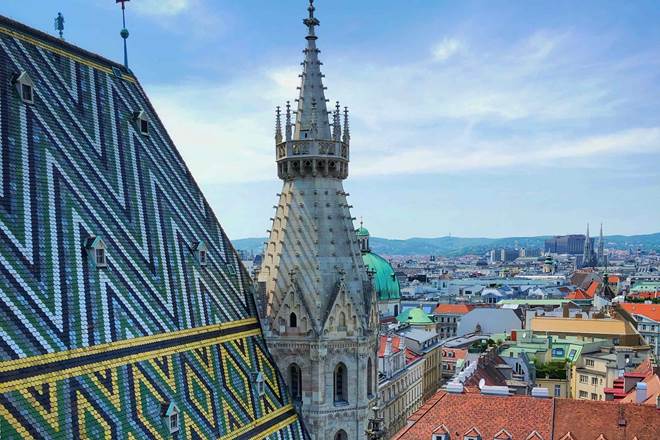Stretching from Germany’s Black Forest all the way to the Black Sea, the Danube is the second-longest river in Europe and the longest outside of Russia.
Crossing through 10 countries, the river is one of the continent’s major shipping routes and has shaped European history for centuries.
Today four national capitals sit along its banks: Vienna, Bratislava, Budapest, and Belgrade. And if you’re not one for river cruises, the good news is that the cities of the Danube are, for the most part, easily accessible by train. A trip through these capitals takes visitors on an adventure through four faces of Europe.
Image Credits, iStock, MickeyNG. Location, Belvedere Castle, Vienna, Austria.
Vienna: city of music
Vienna, the hometown of Beethoven and Mozart, has well earned the nickname “City of Music,” and it remains as much a capital of art and culture in Europe as it did in their day.
Visitors to Vienna can witness the heights of the Austro-Hungarian empire with a visit to the Hofburg, Schönbrunn, and Belvedere palaces, while lovers of the arts can see the works of Pieter Bruegel and Gustav Klimt at the Kunsthistorisches and Leopold museums. Many of the city’s museums are conveniently located in Vienna’s “MuseumQuartier”, which was made of the city’s former imperial stables.
Read more: the best things to do in Vienna, Austria's stunning capital
Image Credits, iStock, SCstock. Location, Bratislava, Slovakia.
Bratislava: the quiet imperial city
From Vienna, it takes just over an hour’s train ride to cross the border to Slovakia and its capital Bratislava.
Though often overlooked in favor of another former Czechoslovakian city, Bratislava is a great stop on a trip from Vienna to Budapest. Known for most of its history as Presburg, the city was once a Hungarian capital and Austrian coronation city.
A weekend is the perfect amount of time to see the city’s many sites, though it can be done as a day trip. But those who stay longer can take the time to enjoy its colorful old town, as well as Slovakia’s rich cuisine and beer scene, and plan a visit to the vineyards of the surrounding countryside.
Image Credits, iStock, Rustamank. Location, Budapest, Hungary.
Budapest: Queen of the Danube
Of the four cities, Hungary's capital Budapest is perhaps the most associated with the Danube – and it’s just a two-and-a-half hour train ride from Bratislava.
One of Europe's most exciting cities with a swirl of influences, from the Austro-Hungarians to the Ottomans, Budapest has something to offer almost any history buff. Those looking for a more leisurely trip can enjoy a dip in one of the city’s many thermal baths, grab a coffee in one of its many cafés, or sip on a stronger drink in one of several famous “ruin bars.”
Image Credits, Unsplash, Dimitrije Melenkovic. Location, Belgrade, Serbia.
Belgrade: the rebellious child
It takes 2 hours 25 minutes by train from Budapest to the Hungarian city of Szeged, where you can hop on a two-hour bus ride to Belgrade.
From Ottoman rule to the First and Second World Wars to the breakup of Yugoslavia, there are plenty of museums and monuments across the city that document the war-torn history of the Serbian capital. But today, Belgrade’s people have turned that restless spirit into one of Europe’s liveliest nightlife scenes.
In Belgrade, one can find a city bursting with bars and clubs, and festivals almost year-round. During the summertime, many of Belgrade’s bars bring the party out onto the Danube itself in riverboat bars known as splavovi anchored along its banks.
Header Image Credits, Unsplash, Victor Malyushev. Location, Vienna, Austria.

